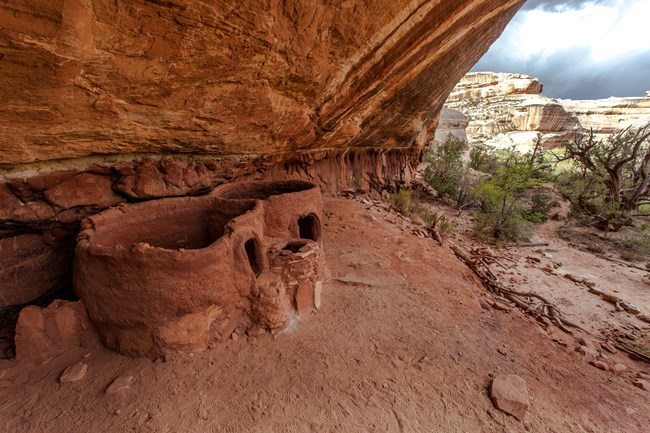Last updated: April 2, 2018
Article
National Park Getaway: Natural Bridges National Monument

NPS/ Jacob W. Frank
“This bridge would overspan the Capitol at Washington, and clear the top of the dome by 51 feet; and if the loftiest tree in the Calaveras grove of giant sequoia in California stood in the bottom of the canyon, its topmost bough would lack 32 feet of reaching the underside of the arch.”
This image, painted in National Geographic Magazine in September 1904, introduced the natural bridges of southeastern Utah to the world.
Natural Bridges National Monument is a place of firsts. With its designation in 1908 by President Theodore Roosevelt, Natural Bridges became the first National Park Service site in Utah. The presidential proclamation states: “a number of natural bridges situated in southeastern Utah, having heights more lofty and spans far greater than any heretofore known to exist, are of the greatest scientific interest.” No one had seen such an impressive example of stream-eroded stone before.

NPS/ Jacob W. Frank
Adventurous hikers can descend into White Canyon and stand beneath these stone works. Visit one bridge or several: an unimproved foot trail connects the three bridges. A “mesa-top” portion completes the loop with a jaunt through Cedar Mesa’s classic high-desert ecosystem.
The wonders of Natural Bridges National Monument aren’t isolated to the bridges themselves. Hundreds of years ago, ancestral Puebloan families spent hot summers sheltered within the cooler, wetter canyons. A trip to Kachina Bridge reveals evidence of these people: pictographs and petroglyphs, grinding slicks, and a small structure. Another group of structures, Horse Collar Ruin, is visible from a short hike along the rim of the canyon.

NPS/ Jacob W. Frank
After the sun sets, darkness descends over the canyons and stars sparkle to life. It’s time to celebrate another first. In 2007, Natural Bridges National Monument was designated the world’s first International Dark Sky park. To help share our amazing night skies, rangers present star programs many summer nights.
Natural Bridges is a place of firsts—first discovery of such large stone bridges, first National Park Service site in Utah, first International Dark Sky Park. This place continues to offer firsts—a first visit, a first time feeling dwarfed by a bridge of stone, a first glimpse into the depths of the Milky Way. What first will you experience at Natural Bridges National Monument?
